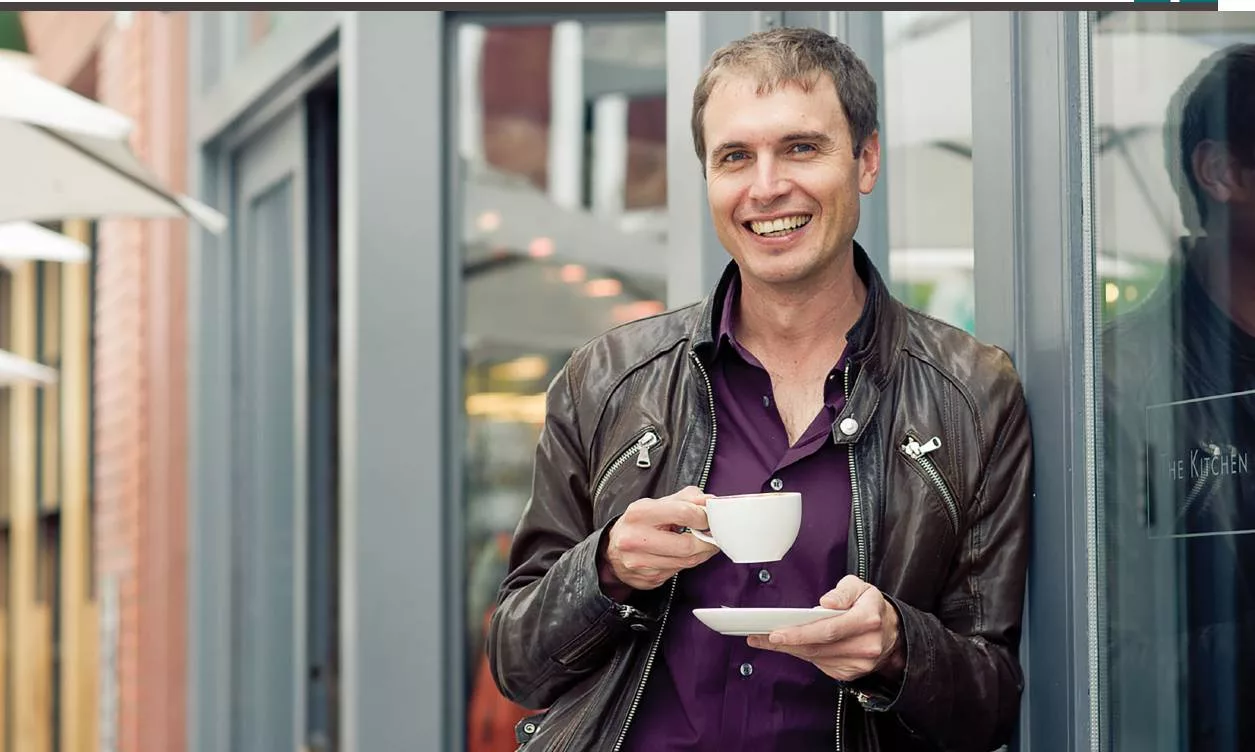What inspired you to be an entrepreneur?
Kimbal Musk: Both of our parents were entrepreneurs and our families were very entrepreneurial. But actually, I grew up in the late ’80s and people were really excited about Wall Street, which is arguably entrepreneurial but not really. I got really excited about it, too, and signed up for business school and worked my ass off and got a plum assignment in one of the big banks for my first summer. And it sucked. It was horrible. I had bosses that just were completely uninspiring. No innovation, no real energy. I simply was not able to work for those people.
So, after that I decided I was going to try to be an entrepreneur and I signed up for College Pro Painting, which is a franchise painting group. You get an area, you learn how to paint, you train people to paint, and you build a business. It was basically Entrepreneurship 101 – you learn how to hire people, pay people, sell to customers, make sure the product quality is good – things like that. And it was very, very hard but very, very successful. I was the top manager in my first year and then, for my second year, I got the best territory in Canada. I was good at what I did and did very well.
But, I was totally bored. I got through the first year, which was more about learning how to be an entrepreneur and that was very exciting. But the second year, where it was just actually going door to door selling paint jobs, was super dull. I just could not wake up in the morning and get excited. So I quit.
It just had no meaning. It was just money. And I’ve been very good at making money. That part has not been a problem for me. The problem has been, how do you do it and enjoy your day at the same time? And so, I got in on the Internet and that was awesome – it changed the world. It was 1995 and no one believed it was the right thing to do. We came out of the gates with a mapping technology that no one had ever seen before, which is now totally normal. We were the first to do maps and door-to-door directions on the Internet. It was really cool.
But then towards the end of that, in ’99, I started to lose interest again because it was the new gold rush and everyone was coming in and it just lost its meaning. We sold our company, and I was like, “I’m out of this.” I went to New York to learn to cook and I loved that. It was very hard though, because cooking schools in New York were old-school and it was very weird to get screamed at by chefs, and you’re just standing there while spittle lands all over your face. And you just stand there like, “I cannot believe I’m listening to this.” I mean it was unbelievable. I was just looking at them thinking, “Are they for real? Is this a joke?” I left there thinking, I’m never, ever going to have that environment in any of my restaurants, and we’ve succeeded in that.
We were actually curious about your transition into food. What was the catalyst behind that?
KM: My father was a pretty good cook. He had a restaurant when I was a kid. So I kind of liked that side, but I’ve actually been cooking for myself and for my family since about the age of twelve. My father taught me a little bit about it at the restaurant they owned through high school. Our family is a super high energy family, so it was the best way for me to get everyone to just sit down and chat for a little bit. Otherwise, we would not really see each other during the day.
We’ve had the same experience through our restaurants – our mission at The Kitchen is “Community Through Food.” And it really means a lot in the Boulder community and the Colorado community. It also means a lot at home.
We would love for you to define what it means to you to be a social entrepreneur.
KM: I’ve actually been working on defining this, so it may sound a little cold, but it really is a blend of measurable social outcome and measurable financial outcome. Financial outcome is pretty easy because it’s been done for hundreds of centuries – since the amoeba. But the social outcome is very amorphous and hard to define. At The Kitchen, we are doing something interesting – we don’t have a reason to do it; our investors do not care about it, but we care. The investors care on an intellectual level but that’s not the reason they support us. Basically, we are measuring every dollar that we put into local farms in Colorado. We put about $1 million into Colorado farms a year – that’s five percent of the local farm industry, which is incredibly huge.
We measure that because it matters to us. We also measure how many dollars we put into relationship-based supply. For example, when we’re getting fish in Colorado, the relationship-based supply is a fishmonger in Maine or someone that we know in Hawaii who’s bringing us fish. A relationship is also a baker who we know in Colorado, but who gets their flour from outside of the state. So, we have another $2 million a year that we put into these suppliers.
We are very conscious about our menu creation, so we actually measure how many people we serve. Most restaurants don’t think in terms of number of guests served. They think in terms of average check, total revenue, and bottom-line cash flow. Our primary measurement is how many guests we’re serving, because the number of people you reach with more consciously created food is a critical social metric. I think that, among all of the restaurants, we have served over a million guests, which will increase with the new Chicago location this year.
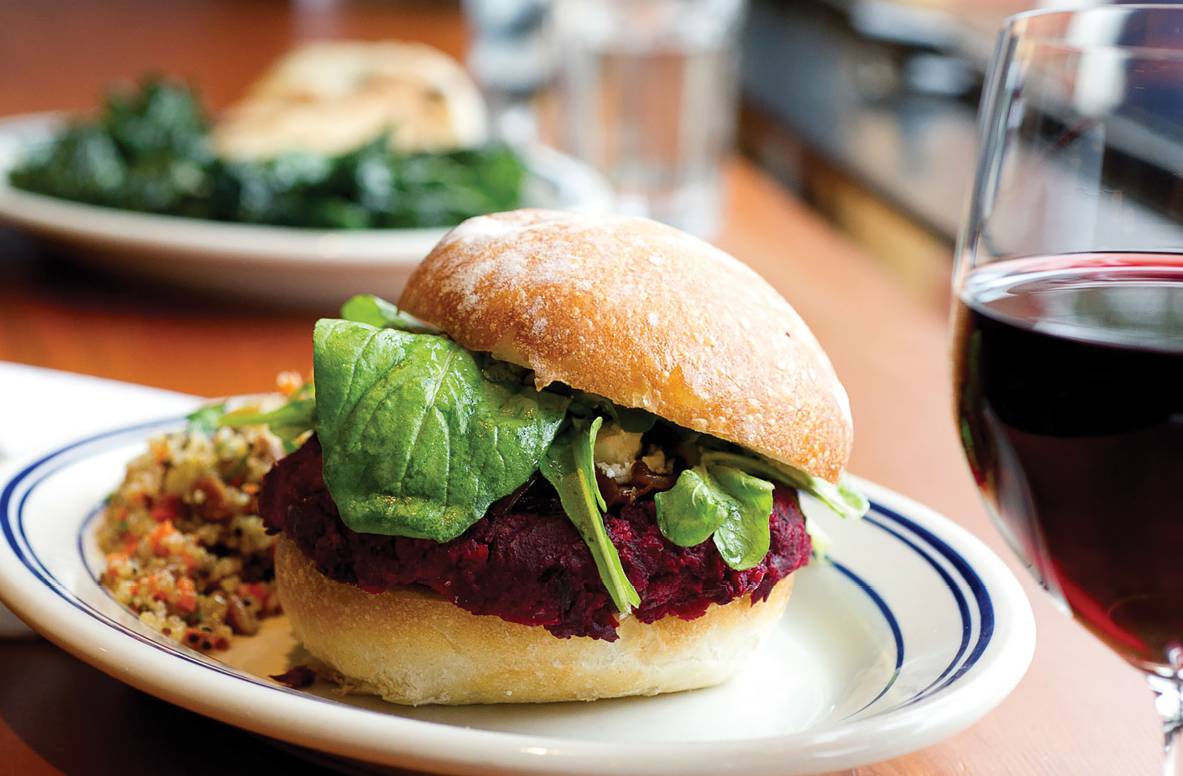
“I believe that it will be a much better world if we are able to come back to real food where you can understand what your food is and you can understand what you’re putting in your body.”
How do you actually choose the food producers that you’re working with? What does that process look like?
KM: We have a very big team now, so the process probably changes every time, but, I think at a high level, we care about the relationship first. If we can look someone in the eyes and say, “OK, I think you’re a good person and you’re going to do the right thing for the earth and for the environment in terms of how you’re going to farm, we’ll trust you in terms of, whether things go wrong or right, we’re working on this solution together.”
Relationships come first and foremost and quality of product usually comes right out of that because there are very few times that you meet someone that you really connect with but the food isn’t right. That’s just very unusual. So, our number one value is that it all starts with relationships.
How much of The Kitchen’s menu is organic or biodynamic? Do those certifications matter in terms of the food that you’re selecting or is the locality more important?
KM: We care a lot about farming techniques but we actually don’t measure that. We measure the locality or the relationship and we’ve always avoided being called organic. We also don’t really like the farm-to-table label. We started way before farm-to-table and farm-to-table is very much a marketing term. It’s not really respected correctly.
I would love to talk about The Kitchen Community and how you decided to transition to starting your own nonprofit.
KM: I kind of got frustrated towards the end of 2008. I wasn’t really happy with what I was doing – it was similar to when I left the Internet. The technology stuff I was doing didn’t have a lot of meaning to it. It was a good, interesting company but not meaningful for me in terms of what I was doing.
And so I really started to get back into food because that’s where I really enjoy myself the most. I was still trying to figure out how I would do it and being very cautious not to get into something that didn’t have meaning for me. I didn’t want to dive into anything without it really feeling right. But I kept trying to dive in, and I couldn’t figure it out, and then I went down a ski hill on an inner tube with my little children, got to the bottom and the tube flipped. I landed on my head and broke my neck. I was horizontal for two months and paralyzed on my left side. That was really intense.
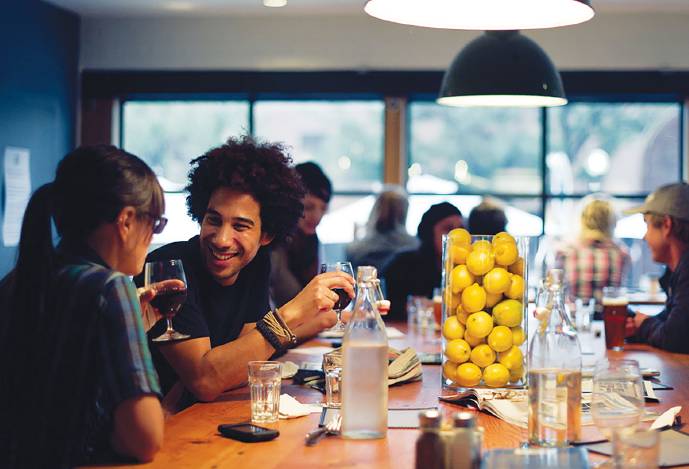

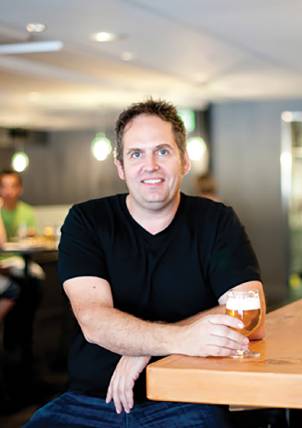
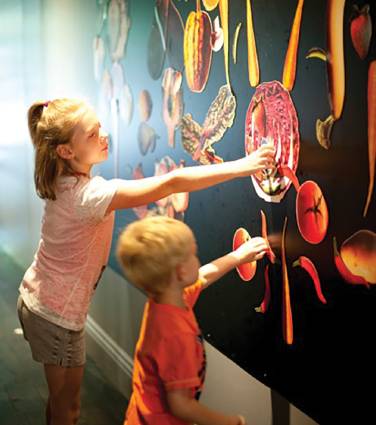
I had a lot of time to think. I was the CEO of a software company at the time and, from the hospital bed, I resigned and said, “You know, this is just not for me.”
Then I called my partner, Hugo , from the hospital and said, “We’re going to go figure out food and how we can grow this in a more scalable way.” Because, while The Kitchen was wonderful, it doesn’t reach a lot of people and it doesn’t really move the needle. I wanted to be part of something that reached more people.
So I told Hugo, “Let’s go figure out how to grow the restaurant. We’ll add a Kitchen in Denver, but I want to create a lower cost, more affordable version of The Kitchen.” Hugo and I worked together and we created The Kitchen Next Door and opened it a year later and were quite successful. It’s one-third the price of The Kitchen and the same philosophy about the food, but has more of a Whole Foods supply chain than a local one.
That’s not to say it isn’t local; it’s very local, but we have benefited a lot from what Whole Foods has done in terms of product quality. The Kitchen is very much a, “Anne the Farmer, what have you got for us today?” kind of thing, whereas The Next Door’s menu is a “printed once a year” kind of thing. The Kitchen Next Door has enabled us to reach significantly more people than we ever could have reached through The Kitchen.
On the nonprofit side, I looked at what Bryce was doing and it was fantastic. He had succeeded in getting garden-to-table learning integrated into the curriculum in the Boulder Valley School District, which, if you know anything about the education system, is a huge accomplishment for anyone, but for this movement is really huge.
The data on science is, if you teach kids science in a Learning Garden, especially around fourth and fifth grade, that’s the best way for them to change their nutritional habits because they’ll double their intake of fruits and vegetables. Just by using vegetables and touching them and pulling them out of the ground and growing them, it just changes their whole view on things compared to something their parents put on a plate at home.

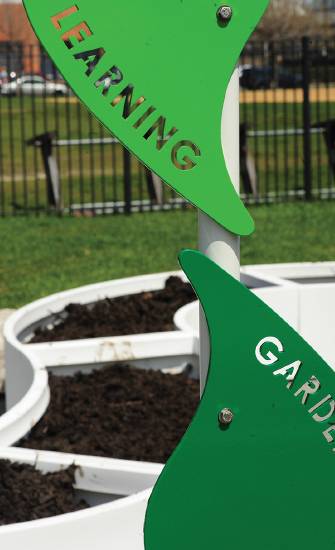
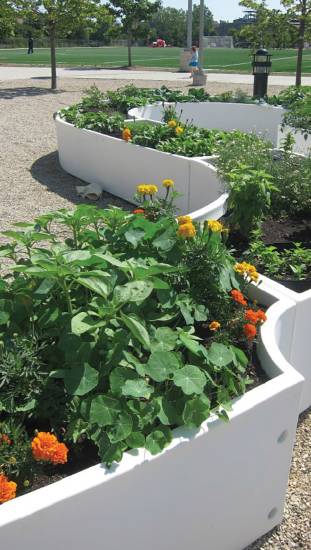
“I really do believe that communities can be deliberately built when the core fabric of that community is food – how people eat it and what they eat.”
So the results were really powerful, and I thought, you know, Bryce is taking care of Boulder but what could we do that would take it around the country and do something that really scales? I decided after my accident that I’m not interested in small scale. I decided that, given the right amount of time, energy, and resources, plus luck and all that stuff, this is the kind of thing that needs to happen and therefore it will happen if it’s done correctly.
We looked at school gardens and noticed they were in the corner of the schoolyard and they had fences around them. Those fences are expensive. They’re wooden raised beds. Wooden raised beds fall apart. It was also very hard to teach with them. If you bring a bunch of kids to a fenced-off area, they do more damage than good to the garden. Teachers also need two or three people with them to help and that’s hard to organize. There’s no spontaneity in that environment.
From the kids’ side, because there’s a fence blocking them from the garden, zero spontaneity is allowed. They are kept out of the garden. And I thought, “there’s got to be a better way to do this.” I asked Jen , who is the other co-founder of The Kitchen and my ex-wife, to help us figure this out and she designed the Learning Garden system, which is like Lego blocks in that you can put together any shape and size garden and it can be used in any schoolyard on top of rooftops, pavement, asphalt, grass, even toxic soil. Because the system is so flexible with regard to the location, we put it right next to the playground instead of putting it in the corner of the schoolyard.
The Learning Garden system was designed so that it was raised high up enough that kids could run through it with no need for a fence, so kids can enjoy it all day long. From a teaching perspective, it was so pretty that teachers would want to use it on a regular basis and say, “It’s a nice day, let’s go outside and read a book in the garden.” It really changed the whole way gardens were done in schools. We’ve also been able to scale it, which is what really matters to us. We’ll be doing our two-hundredth Learning Garden installation in two weeks.
It’s amazing the impact it has on these kids, it really is, and the teachers, as well. While nutrition is important to them, it’s also the rest of the school day and the whole child that really matters to them. With the Learning Gardens, the kids will go outside, they’ll do some lessons, they’ll get a little energy out and they’ll come back and they’ll just be more available for learning the rest of the day.
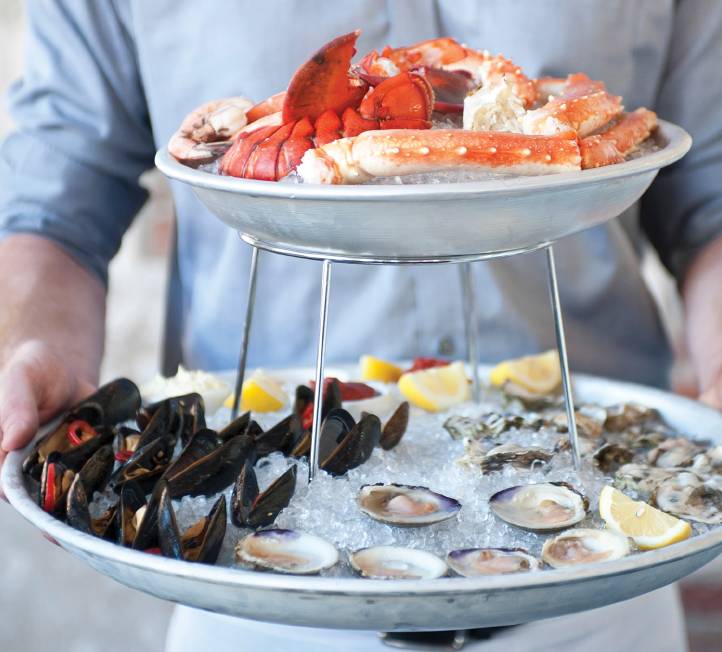
“If your product is good – and I mean truly good, meaning people resonate with it and they’re enjoying it and they are buying it – then you’ll be fine.”
Speaking of levers of change in the food industry, you sit on the board of Chipotle, which has been in the news a lot lately for being just such a lever. What do you identify as the most important instruments for change in the food system? What are your hopes and predictions for the food system and how can we actually change it for the better?
KM: I think it is a tough problem. We’re talking about food at a scale that is virtually incomprehensible. We have to feed three hundred million people here and seven billion globally – that’s just a scale that most people don’t understand and is hard to comprehend. I would say that, with all that, the supply chain has to change. It’s just not interesting to live in a world that has shitty food. I just think that sucks.
It’s my personal opinion, but I really do believe that communities can be deliberately built when the core fabric of that community is food – how people eat it and what they eat. I believe that it will be a much better world if we are able to come back to real food where you can understand what your food is and you can understand what you’re putting in your body.
A friend and I were talking the other day and I learned that apparently there are 72 ingredients in a McDonald’s Big Mac . Really?! How is that needed? It’s built into the system because McDonald’s needs it to be non-perishable so that the burger can survive for a long time. You can cook it and it will still taste like a Big Mac an hour later. From an engineering standpoint, it’s kind of a remarkable feat, but it’s terrifying at the same time.
What I think people are craving (and what we’re seeing from Chipotle’s success) is real food. Not only do you want to know where it came from, but you want to look at it and say, “I want that” or “I want this.” I think that Chipotle benefits enormously in its approach because there’s so little trust in the world today around what food you’re getting from whom. Being able to look at what is going to be put into your burrito or your taco really does help with that trust.
When you’re small like The Kitchen, I don’t think we have to do that, but when you’re competing against McDonald’s, it makes a huge difference. Actually, what’s funny is that McDonald’s started on a very similar idea. There was a lot of food poisoning in the ’40s and ’50s so a lot of the health regulations came into place at that time so we don’t have that problem anymore.
One of McDonald’s great successes in its original restaurant was having glass on all sides so people could go in and see the entire kitchen, see how the food was handled, and see everything being made. Obviously, at that point, it was just meat with bun – simple ingredients and real food. McDonald’s actually started with this process. It was this bizarre idolization of technology and food that took us to a place where we have these sort of Frankenstein products.
My theory is that the Millennials are a much more educated generation. It’s not because of school and so forth; it’s because they have access to information. Wikipedia is available whenever they want. If you were wondering how many ingredients are in a McDonald’s burger, well, if you were living twenty years ago, that was an impossible thing to find out. My friend and I found out within three seconds. And we were shocked. Now that’s going to influence my decisions on McDonald’s burgers forever. You can’t unlearn that stuff, right? And so I think that’s the advantage that our Millennial generation has. If food producers don’t appreciate that, they’re going to learn a very difficult lesson in the next few years.

“Younger people are productive and smart and they understand they can make money in many different ways but are choosing to do it in a way that matters to them.”
Do you think the fast casual dining sector is what will take the type of change we’ve been discussing and scale it?
KM: I think fast casual is pretty much owned by Chipotle. I think it’s a perfectly fine service system and, the more I learn about it, the more I wouldn’t bet against Chipotle.
What I think I’m more excited about is the idea of restaurants where you can sit down and eat with your family and friends. When we started The Kitchen Next Door, we were very tempted to do fast casual because we have a lot of respect for Chipotle. And we actually decided, you know, that’s just not who we are. Our mission is “Community Through Food” and we believe that people crave the idea of being able to sit down with their friends and eat a meal and break some bread with each other.
So, our restaurants are all sit-down restaurants and, I don’t know exactly, but I believe casual dining is still about forty-seven percent of all dining in the country, which doesn’t include fine dining or fast casual or fast food or any of that. Casual dining is still probably the biggest segment. That tells me that, despite the convenience of fast food and the price point of fast casual and fast food, people still want that experience of sitting down and having a conversation and eating and ordering food together. I believe that’s the next big opportunity in the industry, too – figuring out how to bring real food into that sector.
Let’s talk about failure. Not that it seems like you’ve experienced much , but what have you learned from any failures that you have gotten through?
KM: No, we failed a lot actually. In all honesty, it’s amazing how many times I fail on a regular basis. For me, I recognize the failure and I’m OK with it, and then I move on very quickly.
I think that there are two kinds of failure, though. There’s the existential threat, which is life or death. And then there’s the non-existential threat which is, “OK, that sucked, but let’s move on.” The existential threat is really hard, and I don’t deal with that too often. That’s when your company shuts down or is close to being shut down.
That’s a very difficult place to live. I do that once every ten years for a year and that’s about as much as I want to do it. It’s really hard. I’ve had at least one, maybe one and a half failures like that. It sucks, it really does. But I’ve had a lot of other successes.
It’s amazing that people only remember the successes, though; I’m always amazed. Even with Tesla, people are saying, “Wow, you guys have just had such an amazing ride.” Well, two years ago people were thinking we were going to be dead. I think people don’t appreciate how hard business is, and, after the fact, people forget about the failure. But failures happen for me often enough for me to remember them.
As entrepreneurs ourselves, what insights and advice do you have for entrepreneurs trying to get things off the ground?
KM: I think I have an easy one: it’s really all about product. If your product is good – and I mean truly good, meaning people resonate with it and they’re enjoying it and they are buying it – then you’ll be fine.
There are macroeconomic things that can happen, but that’s unusual. If you have a great product that people want, then you’ll figure it out. The times that I’ve struggled is when I haven’t had the product come together in my head properly. And if I can’t get it together in my head, it’s not going to come together in reality.
Have you dealt with resistance within your social circles because of the way you choose to do business?
KM: Well, if you do anything, you’ll get resistance. If you wanted to create a better shoelace, you’ll have a ton of resistance. Anytime you have an idea that you think is interesting, by definition, ninety-nine percent of people are not going to think that it’s interesting. So it doesn’t matter what you’re doing.
There’s a great quote from a friend of mine – one of the best entrepreneurs out there – which is that starting a business is like chewing glass and looking into the abyss. His point is you’d better like your glass sandwich. If you like what you’re doing, you’ll get through it.
What is exciting you right now?
KM: I think that social entrepreneurship is going to be a big deal. I think there are a few things that need to come together with it, but I think younger people are productive and smart and they understand they can make money in many different ways but are choosing to do it in a way that matters to them and the people around them. That’s going to change the world a lot. It’s very exciting to see.
“A lot of people pretend when they go out to eat lunch that they’re not eating out of the back of a Sysco truck. The Kitchen is an ingredient-focused restaurant. Unless you cook, you don’t really appreciate the fact that, whatever you’re eating there, someone actually prepped it. A lot of people don’t fully understand how different The Kitchen is from most restaurants. It’s not just that it’s good food and that it’s organic and local. It is the largest buyer of local organic food in the state of Colorado. It just built its two hundredth organic, functioning school garden at elementary schools around the country. It’s truly amazing.”
~ Joshua Onysko, Founder, Pangea Organics
